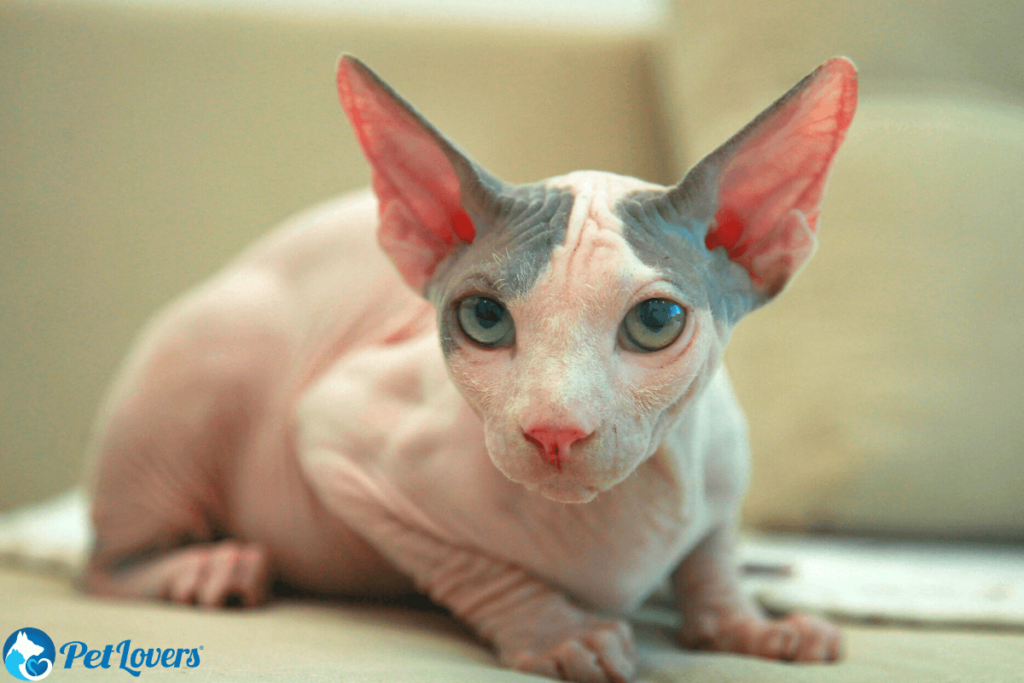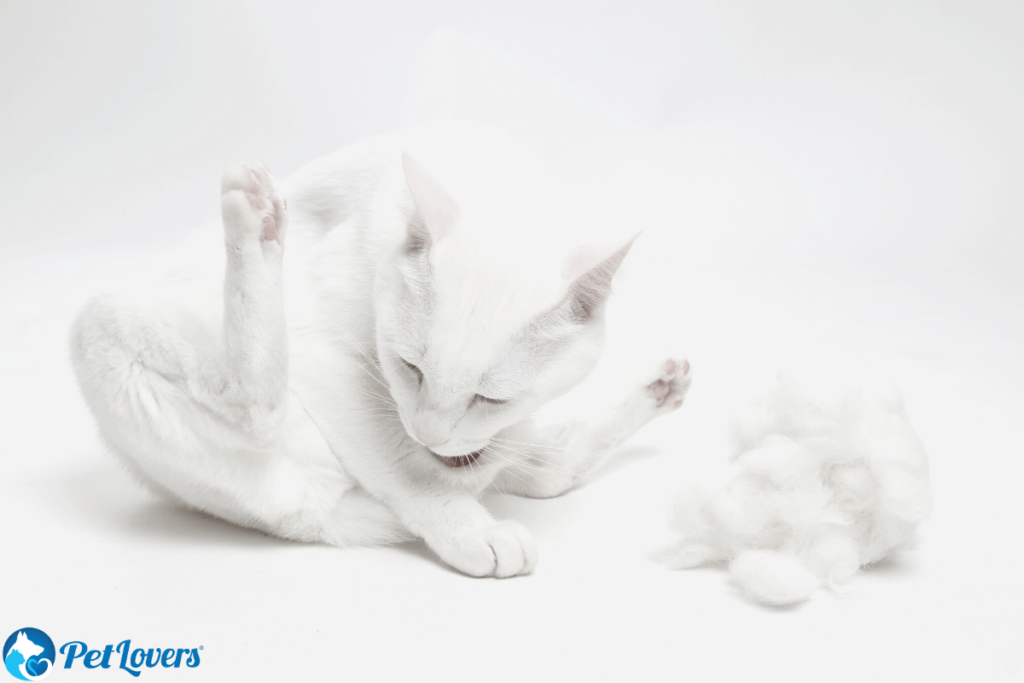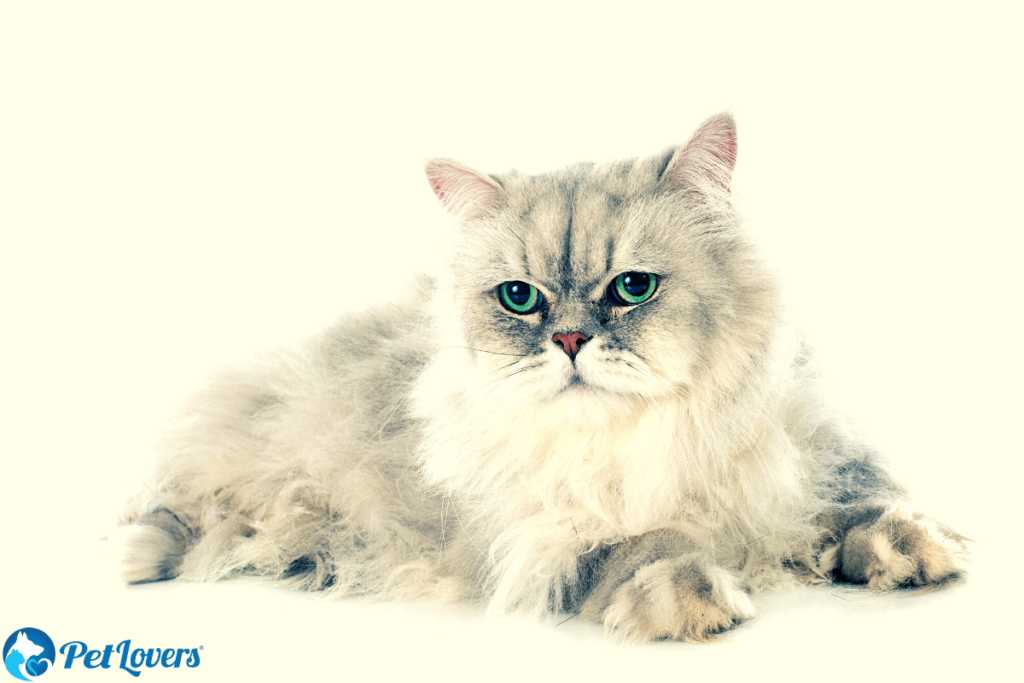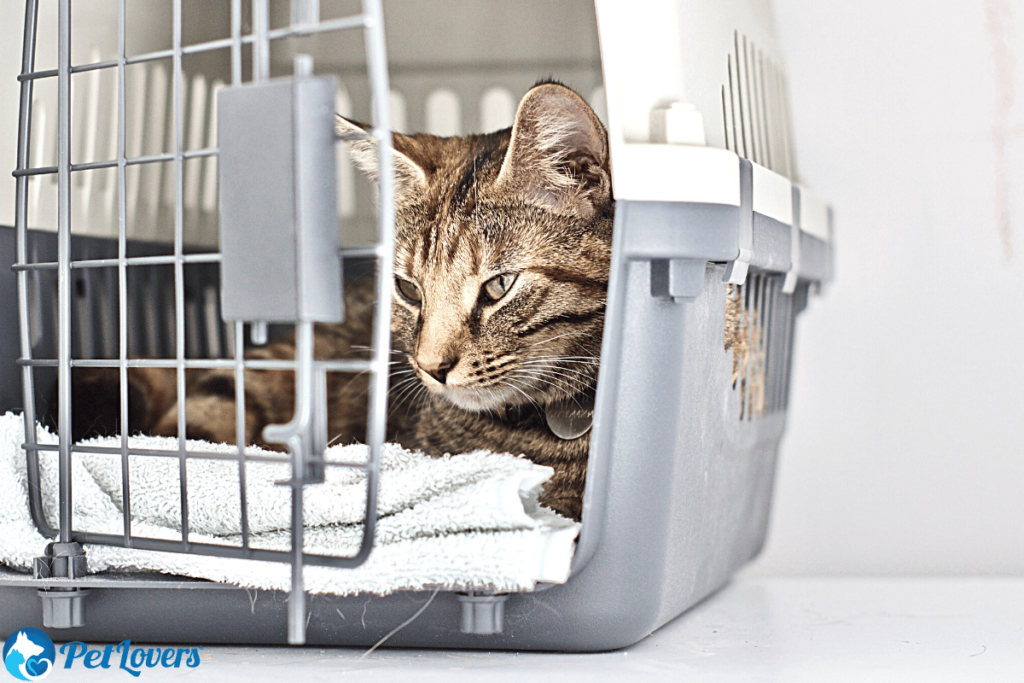Types Of Dog Brushes
Grooming your dog regularly helps minimize shedding, control where that loose hair falls, and improve the health of your dog’s

Seeing your cat losing hair can be worrying for any owner and it is an issue that you’ll need to address right away. While serious health conditions can indeed lead to hair loss, in most cases it’s nothing sinister. Bald spots in cats, excess hair loss, and changes in the cat’s coat can be caused by a range of issues. Let’s take a look at why cats lose hair, and what can be done if your kitty is struggling.
Table of Contents
Hair loss in cats is known as feline alopecia. Cats can develop bald patches or lose large amounts of their coat, depending on the cause. This is a symptom of a health issue, mostly physical, but it can be caused by emotional issues too.
A pet’s hair loss is a cause for concern and should be closely monitored. Owners should be able to recognize changes in the coat and if bald spots have appeared. If a cat is leaving more hair around the home or owners notice more than usual hair upon their clothes, action should be taken.
The most common cause of hair loss in cats is excessive grooming, but why would a cat over-groom? Cats will heavily lick an itchy area, and it is this grooming that causes hair loss. Cats will groom an area if it is itchy, or painful.

Bald patches on the body are the most common symptom of hair loss in cats. Upon seeing a bald spot cat owners should take it to the vet for testing.
Itching or scratching is a precursor to the appearance of bald patches. If you know your cat, you’ll also know its mannerisms. This knowledge will help you to identify when the cat is scratching more than usual.
At the site of hair loss, you may also see red or inflamed skin. This could be a result of excessive shedding and grooming, or both. There is no way of knowing whether or not the inflamed area is a symptom or a problem until you get a physical examination.
Your cat’s hair loss may also be a result of a fungal infection or a poor diet. When a cat’s skin looks dry and flaky, it is often a symptom of problems like these. Spotting skin issues early, will reduce how much hair the cat loses.
Owners should get to know the texture and depth of their cat’s coat, as it could help them to spot issues when they arise. A balding cat will begin to steadily lose fur, and areas of the coat will become thinner. When you pet the cat, pay attention to the texture and various colors of your cat’s coat. If you notice your cats hair all over your clothes and furniture, check out our pet hair removers as well to keep our home clean and tidy.
Parasitic infections are one of the most common causes of hair loss in cats. This can result in bald patches or significant hair loss in the affected area.
Any cat suffering from fleas and ticks will understandably itch themselves to hair loss. These little fellas find their way through the fur, bite into the skin and feed off the cat’s blood.
These critters carry diseases, although it is rare that your cat will contract anything. Bite marks can cause rashes, which then lead to the cat losing fur. Like fleas and ticks, mites usually jump from other cats onto your feline friend.
Unlike fleas and ticks, they live on the hair, and not the skin. As the mites live off the hair, the affected area will appear dull and discolored. As the hair loses nutrients, it falls and creates bald patches.
An allergic reaction is another underlying cause of alopecia in cats. Just like humans, cats can be allergic to all kinds of things. Allergy treatment depends on what the allergen is.
Most owners will know pretty quickly if their cat has a food allergy. Usually, this will be after a change in diet or the introduction of a new treat. Cats will come out in hives and develop bald spots.
Environmental allergens like pollen, mold, dust, mildew, and dander could be causing your cat to itch. If this is the case, finding out what the root cause is, won’t be easy.
Skin infections will present as a rash or inflammation on the cat’s body. Nasty infections can also change the color of a cat’s coat, to a duller tone.
A fungal infection such as a yeast or ringworm infection can cause your cat some real frustration. Fungal infections usually come from contact with soil.
If your cat develops a bacterial infection, it will likely be a result of drinking contaminated water or eating some undercooked meat. A bacteria-infected animal will show symptoms very quickly.

Hereditary hair loss in cats is often caused by hormonal disorders, passed on through the bloodline. A cat’s thyroid gland takes care of the growth hormone, among many others.
If a cat has an overactive thyroid, known as hyperthyroidism, it can impact the growth of hair follicles. This underlying disease can be easily treated once diagnosed.
Cushing’s disease or hyperadrenocorticism is rare in cats but could be the underlying cause of your cat’s bald patches. This disease sees a cat’s adrenal gland to over-produce cortisol, a steroid hormone usually produced in stressful situations.
Whilst hyperadrenocorticism is a disease that creates too much cortisol leading to hair loss in cats, this can also happen if cats are stressed and anxious. A house move, getting lost, or fighting, are all stress-related events that can cause hair loss.
In extreme cases, you may see psychogenic alopecia, where a cat essentially self-harms. This results in feline-acquired symmetric alopecia, which is hair loss on both sides, as a result of self-harm, often caused by trauma.
A deficiency of vitamin D, iron, B12, and other essential nutrients can make cats lose weight, become anemic and lose fur too.
Given the range of potential issues causing a bald patch or a cat’s hair loss, diagnostic testing is required to get to the bottom of it. Here’s what your vet will look at.

The hardest part of treatment is identifying the underlying cause of fur loss. There are treatment options for the bald patch or areas of hair loss, such as creams and balms. Your vet will treat both the symptom and the cause.
Medication can be prescribed to treat an infection, a flea infestation, or even to manage pain. Most are taken orally, although the vet can speed up a drug’s efficacy with an injection into the cat’s body.
If the cat is allergic to certain foods, a simple change in the cat’s diet should improve its health, and bring its fur back. Topical creams are used on skin conditions like dermatitis and other irritations. This will treat the affected area and reduce itching.
Many cat owners look for home remedies to treat dry skin and fur loss, to see if things clear up. Aloe vera is commonly used to treat an affected area.
Owners can take action to prevent the loss of their cat’s fur before it becomes a major issue.
Grooming will stimulate the skin, encouraging it to produce the natural oils that keep it healthy. A slicker brush is great for cat grooming and helps keep their fur sleek and shiny, while also helping them relax and reduce stress.
Using a flea collar can help your cat avoid infestations, and so too will regular grooming. Keep an eye out for any external parasites and have flea treatment tablets ready in the house for any infestations.
A good diet is so important for cats. Make sure that it contains the correct nutrients and vitamins depending on the breed. Vitamin D is important too, as cats don’t synthesize this like humans.
A cat’s environment has a big impact on stress levels. Don’t handle the cat if they don’t want you to, give them space, and make sure that they have lots of puzzles and places to climb at home.
From allergic reactions to external parasites, diabetes, hyperthyroidism, or a poor diet, many issues will cause your cat to over-groom, and lose fur. If you spot fur loss or other symptoms like brittle hair, coat color changes, or inflammation, seek medical attention. Diagnostic tests can easily be carried out by the vet to give you an accurate diagnosis and a treatment plan. For those with multi-cat households, diagnosis, and treatment are all the more important, as infections and infestations can spread quickly.
 PetLovers
PetLovers
Grooming your dog regularly helps minimize shedding, control where that loose hair falls, and improve the health of your dog’s
Have you begun to notice a little more cat fur around the home than you are used to? Most cat
A slicker brush is one of the most essential tools in your dog grooming arsenal. This product can do it
TO GET 15% OFF ON ALL YOUR PURCHASES